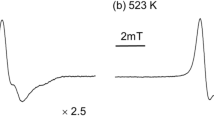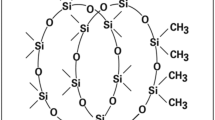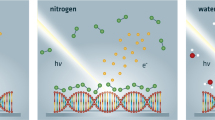Abstract
THE radiation chemistry of polypropylene is of particular interest because its chemical constitution:  is intermediate between that of polyisobutylene, which exhibits molecular degradation, and that of polyethylene in which although some degradation occurs, cross-linking predominates. It has been reported in the literature that polypropylene undergoes cross-linking on exposure to high-energy radiation1, but no information has hitherto been reported as to the extent to which molecular degradation takes place. For this reason we have undertaken an investigation of the radiation chemistry of polypropylene, the preliminary results of which are given below.
is intermediate between that of polyisobutylene, which exhibits molecular degradation, and that of polyethylene in which although some degradation occurs, cross-linking predominates. It has been reported in the literature that polypropylene undergoes cross-linking on exposure to high-energy radiation1, but no information has hitherto been reported as to the extent to which molecular degradation takes place. For this reason we have undertaken an investigation of the radiation chemistry of polypropylene, the preliminary results of which are given below.
This is a preview of subscription content, access via your institution
Access options
Subscribe to this journal
Receive 51 print issues and online access
$199.00 per year
only $3.90 per issue
Buy this article
- Purchase on Springer Link
- Instant access to full article PDF
Prices may be subject to local taxes which are calculated during checkout
Similar content being viewed by others
References
Miller, A. A., Lawton, E. J., and Balwit, J. S., J. Poly. Sci., 14, 503 (1954).
Ciampa, G., La Chimica e l'Industria, 38, 298 (1956).
Black, R. M., Nature, 178, 305 (1956).
Flory, P., and Rehner, J., J. Chem. Phys., 11, 521 (1943).
Charlesby, A., J. Poly. Sci., 11, 513 (1953).
Author information
Authors and Affiliations
Rights and permissions
About this article
Cite this article
BLACK, R., LYONS, B. Effect of High-Energy Radiation on Polypropylene. Nature 180, 1346–1347 (1957). https://doi.org/10.1038/1801346a0
Issue Date:
DOI: https://doi.org/10.1038/1801346a0
This article is cited by
-
Thermal expansion of irradiated polypropylene from 10?340 K
Journal of Materials Science (1993)
Comments
By submitting a comment you agree to abide by our Terms and Community Guidelines. If you find something abusive or that does not comply with our terms or guidelines please flag it as inappropriate.



